Last year, archaeologists came across a 4,500-year-old mummy of a woman at Aspero, in Peru – and she was given the moniker of the ‘Lady with the Four Brooches’. Now to put things into perspective, this ‘new world’ discovery is almost as old as the Great Pyramid of Giza, thus shedding light on the intricacy of the pre-Columbian civilizations of America.
And now, a collaborative effort from researchers (at Caral Archaeological Zone or ZAC and Inca Garcilaso de la Vega University or UIGV) has resulted in the reconstruction of the face of the ‘Lady with the Four Brooches’, with the incredible recreation being unveiled at the Ministry of Culture in Lima, on 11th October.
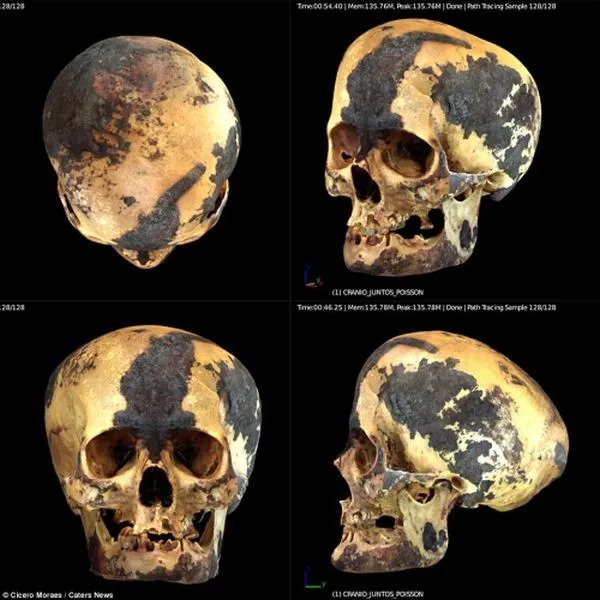
The reconstructed visage represents a middle-aged woman (40-50 years old and around 5 ft tall) with simple features and a benign, almost-affectionate bearing. However, there was more to this ancient lady than her gentle face suggests. According to Dr Ruth Shady, director of ZAC –
It’s exciting to see the computer-generated 3D image of a person who we believe was a noblewoman with important social standing and authority in the ancient Caral civilization. Her discovery refers to the four brooches or ‘cuatro tupus’ carved from animal bones and shaped like monkeys and birds, that were found pinned to the fabric covering her remains. We know that these ornamental fasteners were used by women of prestige in traditional societies as symbols of their affluent social status. By revealing this ancient female’s face, we can throw some light on an intricate culture that supported gender equality, allowing both men and women to hold, political, religious and leadership roles.
Now as for this reconstruction, the process was not without its fair share of hiccups. For starters, the researchers had to deal with a missing eye. Furthermore, the mummy’s cranium was also severely deformed, possibly due to intentional ritual cranial distortions followed by some ancient Andean civilizations (for reasons still unknown). In any case, the scientists could figure out other aberrations, like three fractures on her skull that might have been caused by a fall.
Brazilian 3D computer graphic artist, Cicero Moraes, who was a part of the digital reconstruction process said –
There was a dark mass obscuring the skull’s left eye socket which was partly caused by decaying body tissues and remnants of the funeral blanket covering the corpse. Photogrammetry can only take 3D photographic scans of the outside of the object, so I digitized the skull as it was and found an ingenious way to fill in the gap. I simply mirrored the right eye orbit and copied it to the left side. I was able to soften the jawline by giving it a more feminine pointed chin.
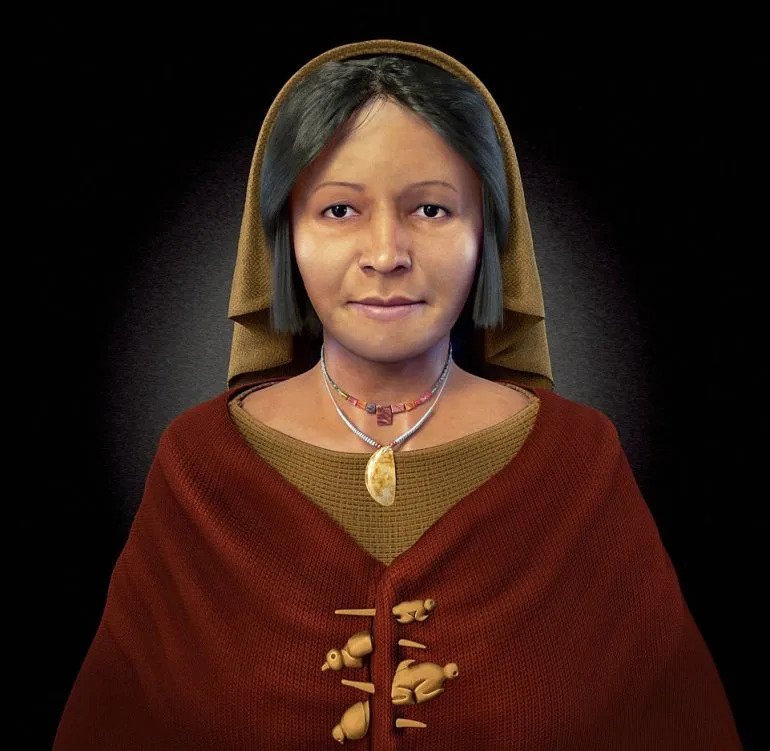
He also talked about how the artists recreated the various facial features complemented by the different density parameters –
Working with a disfigured skull is always a challenge as there is very little data to use as a reference. I compared the ‘Lady’s’ skull with a modern woman of compatible ancestry and age. By overlapping the structures, you could see how the jaw on the ancient skull was more robust and square compared to the recent skull. I reconstructed the face by working with the anatomical distortion while referencing the modern skull. I also used data tables which give the standard density of skin tissue, muscles and fat on various sections of the head.
Coming to the historical scope of the ‘Lady with the Four Brooches’, the find hailed as one of the most important archaeological discoveries of 2016, pertained to an entombed body discovered inside a burial chamber in the Huaca of the Idols.
This fascinating structure entails one of the many pyramid-shaped buildings in the region designed with overlapping platforms and a central staircase (pictured below).
The deceased woman was flanked by objects like broaches with animal-shaped etchings, a necklace made of sea shells, and a pendant of Spondylus (bivalve molluscs). These jewellery items allude to her affluent social status, while also hinting at how high-end commodities and items were possibly traded between the coastal and inland settlements in pre-Columbian Peru.
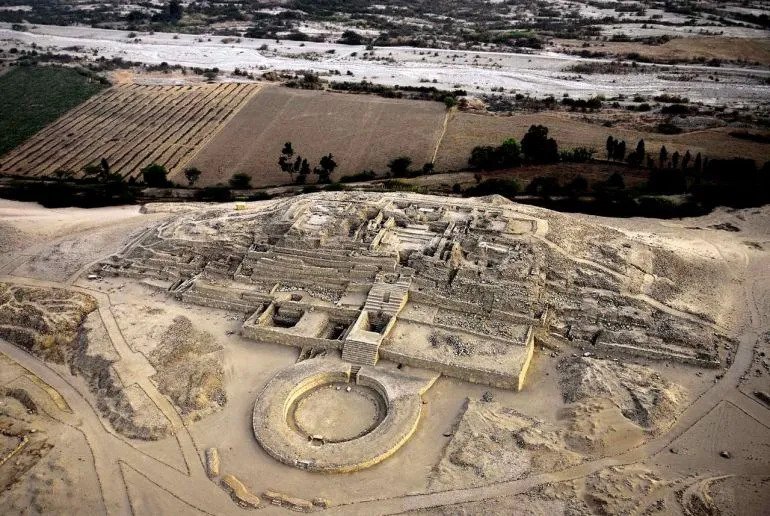
Interestingly enough, the site of coastal Aspero in itself is only 14 miles away from inland Caral (or Caral-Supe), possibly the oldest known city in the Americas. This obviously brings us to the question – who were these ancient inhabitants of Peru who built impressive monuments and pyramids that were contemporary to their Egyptian counterparts? Well, the answer points to the so-called Norte Chico civilization, a factional conglomeration of around 30 major population centres, which was established along the region of north-central coastal Peru.
The Norte Chico thrived from 3500-1800 BC, thus making them the oldest known civilization in the Americas. And of the major cities (or probably the biggest one) of this conglomeration was Caral, a massive urban sprawl that covered 60 hectares of area, and was home to numerous temple complexes, and earthen mounds (pyramids), circular plazas and even a geoglyph.
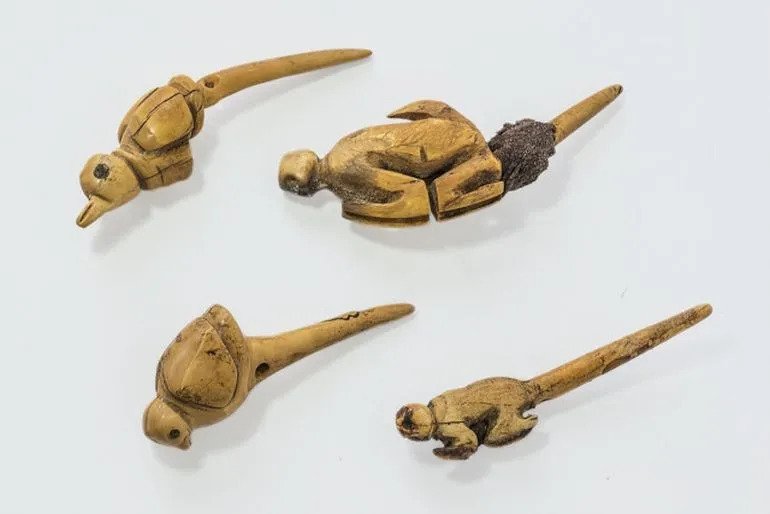 The main temple compound among these impressive architectural feats relates to the Templo Mayor, a massive complex encompassing an area of 150 m (492 ft) in length and 110 m (360 ft) in width (with an average height of 28 m or 92 ft), which is more than equivalent of three American football fields! Oddly enough, the commercial and economic aptitude required for these ambitious constructional endeavours was (probably) not fueled by wars and conquests on the part of the political elite. In that regard, much like the ancient Jomon people of Japan, the Norte Chico culture was not predisposed toward violence, as evidenced by the lack of warfare-based weapons, trauma-bearing skeletons and even human sacrifices (which possibly occurred in very rare instances).
The main temple compound among these impressive architectural feats relates to the Templo Mayor, a massive complex encompassing an area of 150 m (492 ft) in length and 110 m (360 ft) in width (with an average height of 28 m or 92 ft), which is more than equivalent of three American football fields! Oddly enough, the commercial and economic aptitude required for these ambitious constructional endeavours was (probably) not fueled by wars and conquests on the part of the political elite. In that regard, much like the ancient Jomon people of Japan, the Norte Chico culture was not predisposed toward violence, as evidenced by the lack of warfare-based weapons, trauma-bearing skeletons and even human sacrifices (which possibly occurred in very rare instances).
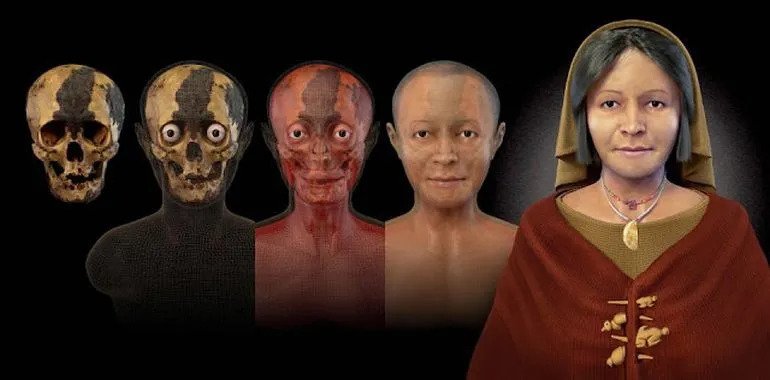
In any case, there is still much to know about the Norte Chico (Caral) civilization of ancient Peru and the inter-relation between the coastal towns (like Aspero) and the inland cities (like Caral). Furthermore, there is also the angle of how women could achieve higher statuses within the society – as evidenced by this mummy in question. And lastly, a baffling element accompanies the architectural feats of the advanced civilization, and it pertains to how the Norte Chico didn’t dabble in either visual art or ceramic-based pottery.





